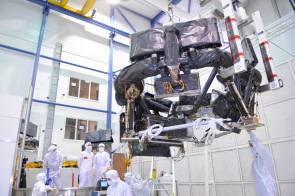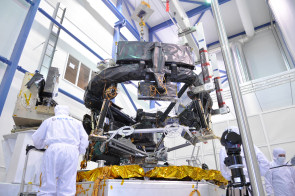#08: Gaia Flight Model Payload Module thermal testing completed
20 February 2013
Thermal balance and thermal vacuum testing of the Gaia flight model payload module was completed at Centre Spatial de Liège, Belgium, towards the end of 2012. The payload module was returned to Astrium Toulouse in mid January 2013 for integration with the service module.
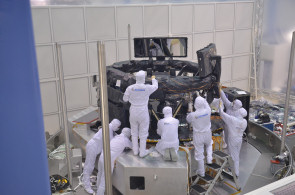 |
|
Preparing the Gaia Payload Module for Thermal Balance and Thermal Vacuum testing. Credit: Astrium SAS |
Thermal balance and thermal vacuum testing of the Gaia Flight Model (FM) Payload Module (PLM) was conducted at Centre Spatial de Liège (CSL), Belgium, from early November to mid December 2012. The actual test process lasted 40 days without interruption and was designed to verify the thermal performance of the payload. The results of the tests are now being compared with the thermal models.
Particular attention was paid to the thermoelastic behaviour of the module and the possible effects of thermal perturbations on the basic angle (see journal entry #03: 'Gaia Basic Angle Monitor delivered for integration' for an explanation of the basic angle). A fully functional Video Processing Unit (VPU), normally part of the Service Module (SVM), was located outside the vacuum chamber and connected to the Focal Plane Array (FPA) in the PLM. The passage of star images across the FPA was simulated during the tests, allowing end-to-end performance measurements under realistic thermal conditions. Results are being analysed in detail but the initial assessment indicates good thermal behaviour and optical performance.
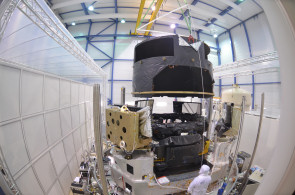 |
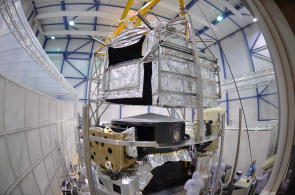 |
|
Gaia Payload Module thermal tent installation. |
Thermal shroud being lowered over the Gaia Payload Module. Credit: Astrium SAS |
The PLM was returned to Astrium Toulouse on 16 January in preparation for integration with the SVM, which took place on 31 January.
About Gaia
Gaia will create a three-dimensional map of the Milky Way, in the process revealing information about its composition, formation and evolution. The mission will perform positional measurements for about one billion stars in our Galaxy and Local Group with unprecedented precision, together with radial velocity measurements for the brightest 150 million objects. Gaia is scheduled to launch in 2013 for a nominal five-year mission, with a possible one-year extension.
The spacecraft will operate in a Lissajous orbit around the second Lagrange point of the Sun-Earth system (L2). This location in space offers a very stable thermal environment, very high observing efficiency (since the Sun, Earth and Moon are all behind the instrument FoV) and a low radiation environment. Uninterrupted mapping of the sky will take place during the operational mission phase.

